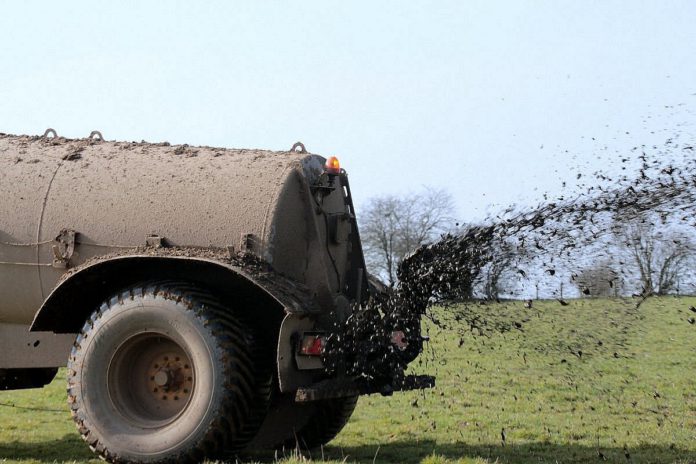With the exceptionally wet weather during February and early March, slurry and fertiliser applications have been delayed, writes CAFRE dairying advisers.
On many farms, especially in the west, ground conditions have just recently improved enough for slurry and fertiliser spreading.
Use soil testing results to choose suitable fertilisers ensuring good soil fertility and grass growth.
Research has shown that low fertility soil, with phosphate index 1 or below, equates to a severe loss in grass growth over 12 months of more than 2t DM/ha.
Use soil analysis results
Soil analysis is a reliable and cost-effective method of measuring the existing status of phosphate (P) and potash (K). The results provide a sound basis for planning this year’s fertiliser programme.
The Nitrates Action Programme prohibits the use of P fertiliser unless soil analysis shows that the level of soil P is inadequate for the need of the next crop. On most dairy farms, P levels are adequate, especially on land that regularly receives slurry.
Slurry spreading
Dairy cow slurry is a valuable source of nutrients for grass growth and should be taken into account before deciding on the type of fertiliser and amount of fertiliser to apply.
On land with soil indices of 2 or above for P and K, slurry applied at 33,000 litres/hectare (3,000 gallons/acre) in spring will supply approximately 34kg nitrogen (N) / hectare (27 units/acre), 41kg P / hectare (32 units/acre) and 96 kg K / hectare (77 units/acre).
At this stage of the spring, no more than 3,000 gallons per acre should be applied.
Methods of applying slurry like the trailing shoe or band spreading reduce the loss of nitrogen to the atmosphere compared to the conventional splash plate.
Research at AFBI, Hillsborough has demonstrated that spreading slurry using a trailing shoe machine increases the utilisation of slurry nitrogen by up to 25 per cent compared to a conventional inverted splash plate.
Slurry is best applied to silage fields where it can make a major contribution to the high K requirement of the silage crop.
When applying slurry, it is important not to apply to waterlogged land, within 10 metres of a watercourse or 20 metres from a lake in order to maximise the value of the slurry and minimise the risk of pollution.
If using low emission spreading with band spreader or trailing shoe, then the 10 metres rule is reduced to three metres.
It is also important to highlight that dairy farmers, who have a derogation, must apply at least 50 per cent of total slurry before June 15 and then after that date, they must apply slurry by low emission spreading techniques.





